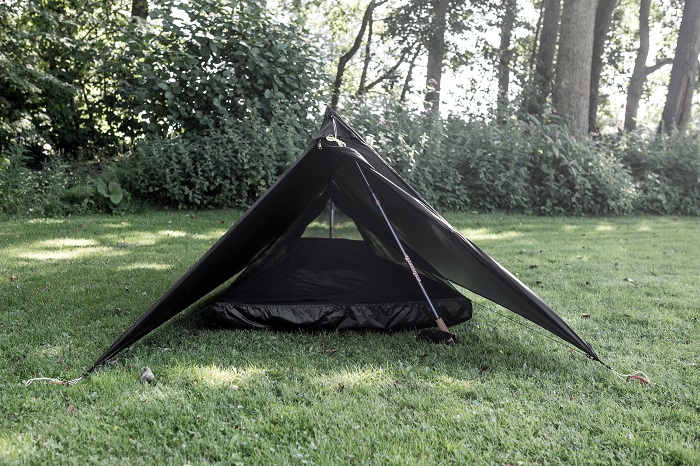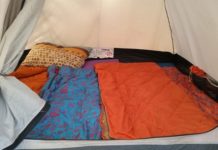Camping season is imminent, raising a controversial topic: "Tent footprint vs tarp: which is better?"
Tarps and footprints are the increasingly prevailing ways to enjoy the outdoors. Their advantages are numerous: they're easy to pitch, lightweight, and compact to carry, along with waterproof ability. Yet, weigh up their downsides as well to pick the better.
Before getting involved in a getaway with your besties, read this post to decide which one is your reliable assistant. Besides an in-depth analysis of their pros and cons, we also unveil their definitions and categories available.
Off we go!
What Is A Tent Footprint?
Many individuals love to pitch tents and sleep under the starlit nights. They load their gear and head out for their camping trips. Yet we bet that the vast majority of campers will not know deeply about a tent footprint.
Tents can be expensive, as anybody who has ever bought one knows. This emphasizes the need to take measures to make a wise investment and prolong its useful life.
A footprint is just a square of fabric with the same size as your tent bottom's. It is the barrier between your tent's bottom and the ground, protecting it from moisture and wear.
Rips caused by the rocky ground may damage the tent's basics. And if the soil is moist, the floor can get muddy and grow mildew and mold accordingly. That's why a footprint becomes necessary.
Any footprint you choose will make your pack a little heavier. The average weight of a Tyvek and Polycro footprint is between two and five ounces (55-140 grams). Meanwhile, custom-made ones measure 6-8 ounces (170-225 grams). That said, this additional heaviness is well worth it.
A footprint may minimize damage to the tent by providing an extra layer of protection against punctures, tears, and any moisture, which might lead to an ungodly night's sleep.
Footprints often comprise a waterproof material with a slew of types. Of note, water resistance is the most crucial attribute. Their typical materials may be rubber, vinyl, plastic, or Tyvek with ready-made or fashioned styles.
No matter what materials, tents can get damaged by improper usage or maintenance. First off, their floor needs to withstand significant stress.
Tents pitched on uneven terrains, such as rocks and dirt, can suffer rapid bottom wear. That is not to mention people's natural tendency to roll about in their sleep. Combine these two factors, and now you've got a formula for friction and abrasion: they can cause rips and tears in the tent fabric.
Types Of Footprint
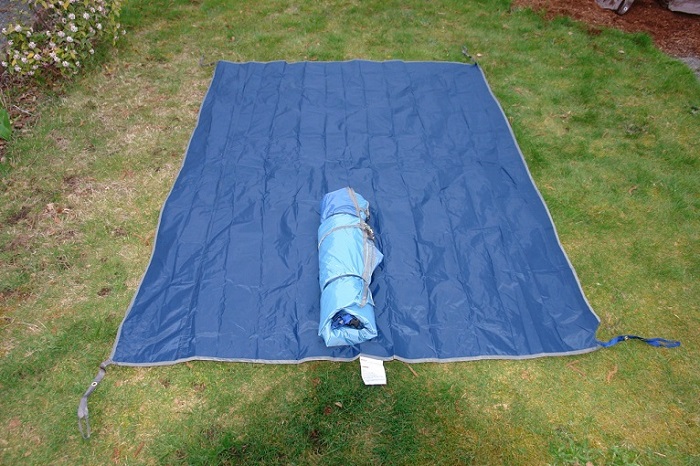
Footprints are made with different fabrics and come in multiple types, as below:
- Solid Footprint: This one can create an extra layer of waterproofing at a lower cost. Plus, this footprint style keeps you warm in winter or bitterly cold conditions and is easy to clean.
Conventional wisdom recommends using a footprint more extensive than your tent. As such, you can optimize the condensation and feasible water resistance.
- Mesh Footprint: This footprint is the go-to choice as it confronts rainwater accumulation near your tent’s bottom by letting it pass through instead of being stuck on the sheet’s top.
However, this one often costs a bit more. It also fails to prevent poking from minor sharp stuff.
- DIY Footprint: Here comes an alternative to the standard solid and mesh footprint for financially-constrained campers. There are a plethora of potential DIY approaches to this. If you plan to do so, consider the following options:
You can employ an old tarp as a ground cloth for your tent. Make sure to trim it to fit the tent size. If the tarp is larger than the tent, it could work, yet the opposite doesn't - a small one can't resist pouring rains, no doubt.
A window wrap would help as well. Ones used in the winter can keep your shelter warmer and more solid.
A duvet or an old blanket is also good to go. Yet they are in vain when the camping ground is wet or there's a storm.
Tent Footprint: Pros & Cons
If you've been camping before, you may realize how crucial a footprint is. Still, nothing is perfect, with several weaknesses parallelly.
Here is a quick rundown of the benefits and drawbacks of a footprint:
Pros
- Work wonders on rainy days, as the groundsheet can get soggy and muddy.
- It is ready-sized for the tent.
- Prevent dirt and water from seeping into the floor.
- Speed up the pitching time as you fully grasp where the tent's four corners should go.
- Due to its made-to-measure design, picking the appropriate footprint is a breeze.
- Act as an additional layer of insulation to trap the warmer air to keep the heat throughout the night (instead of letting the ground absorb it). Keeps you warmer on cold nights.
- Remain in pristine shape very well for the long run.
- Provide a protective barrier between the groundsheet and the stones' sharp edges and sticks at your campsite.
- Worth your money and investment.
Cons
- It’s expensive. So a footprint considerably raises the price of the tent.
- Since they can not extend, they're not very effective as a "front door mat" to catch dirt and mud tracked inside.
- Footprints are not designed to provide shade or protection from the elements and won't hold up to wind gusts.
- They often do not last as long as tarps.
- Single-purpose only. It cannot replace a tarp as a floor covering.
- Waterproof ability never overweighs that of the tarps.
- It can be heavier than tarps.
What Is A Tarp?
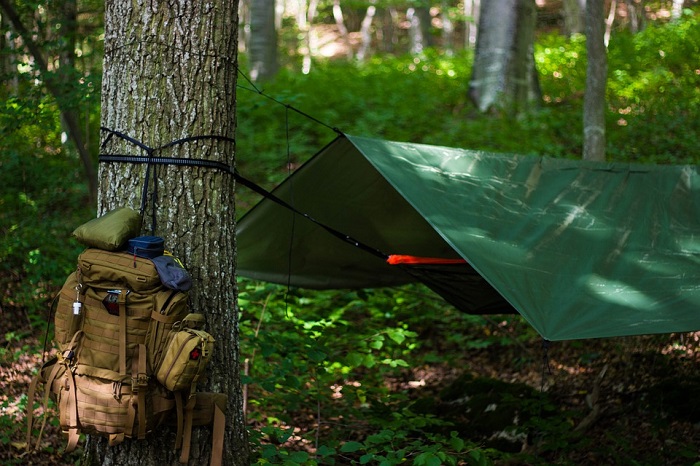
A tarp is an essential and multi-functional camping item employed to shield the floor from damage and moisture, among many other tasks. Two of the primary materials for tarps production comprise vinyl and plastic.
However, most current tarps are crafted from a cheap woven polyethylene mix that is resilient, water-resistant, and lightweight.
Tarps can substitute footprints to protect the tent in countless conditions. Still, these items often aren't pre-cut to fit under a tent. Thus, you'll need to start with a full-size tarp and trim it down.
Tarps are not as thick as the footprints. Thus they won't provide the same amount of comfort. In turn, they are superb at blocking moisture out.
Users also make use of the tarps in other cases. For example, make up a tarp as a makeshift shade shelter for lunch while on a trek. Also, when you're out in the middle of nowhere, a high-quality tarp may serve as a roof and keep you dry throughout your camping excursion.
Not to mention, a tarp may double as a table, a place to cook, or a roof over your head to protect you from heavy rain. You will be safe from the scorching days and pouring rain. Because many do not bring any food inside the tent and only cook outdoors, a tarp is a great place where you can still prepare food and enjoy it outdoors on rainy days.
Tarps are also handy for making temporary structures like teepees, lean-tos, and A-frames that can save you from risky elements.
Lightweight tarps might weigh as little as 100 grams per square meter. A camping tarp is the lightest option, but it's a trade-off regarding comfort and extra equipment.
Moreover, a tarp fails to overshadow a footprint in terms of security and durability. Another flaw related to A-frame tarps is that their shelters look like a conventional tent, but they have no floor and are exposed on both sides. The holes in your mattress will serve as an open invitation to insects and other pests. This may be a severe issue if camping where nocturnal predators are common.
Types Of Tarp
Tarps come in a source of categories for different purposes. Here is a list of common kinds of tarp:
- Poly Tarps: Poly tarps are made of polyethylene, as the name suggests. It contains a sturdy polymer that is both watertight and plastic-like in texture. These tarps are among the most demanding and reliable available.
You have multiple color options besides camouflage and transparent versions to choose from. Blue poly tarps are one of the most widely used with their qualified traits.
White, red, yellow, green, and silver hues work wonders for the heavy-duty poly tarps, while brown and orange are the options for the standard.
If you want more security, a two-ply tarp stands out owing to its protection's double layers. Poly tarps are solid and long lasting, making them somewhat cumbersome to transport.
- Canvas Tarps: Cotton is the primary component in making canvas tarps. They are a viable choice with reinforced eyelets for secure fastening and a hemmed finish. Though the canvas is not watertight, it shields you adequately from the wind.
As opposed to poly tarps, they are far more portable and convenient to store and transport. There is a wide range of colors and textures available. Fire retardant and water repellent treatments are ready for some canvases.
- Nylon Tarps: Tarps made of nylon are particularly portable thanks to their small weight. It's easy to fold, snuggle, or roll a nylon tarp for compact storage and portability.
Generally speaking, nylon tarps for camping are entirely waterproof and come in multiple sizes and colors.
Nylon provides shelter from the elements (wind, sun, and water), but it doesn't last as long as canvas or poly. Some of them coated in silicone can end up with heavier weight.
You can use this tarp as an extra groundsheet for your camping tent and set up camp easily, even if the ground is muddy or wet.
- Mesh Tarps: Mesh tarps, which are lightweight and airy, are often used to obstruct or shade debris. Granted, due to the weave's openness, water and air may easily pass through them during a downpour.
The mesh tarps need a little bit of polymer to create. The grommets and reinforced corners make it very portable and versatile.
Tarp: Pros & Cons
Tarps have more uses than any other camping equipment. Benefits abound when using them as ground cover, along with other undoubted upsides. Still, tarps entail other downsides as well. Have a glimpse of these highlights:
Pros
- Versatile: serve as a shelter, a table to protect your belongings, and gear while setting up the tent.
- A tarp may double as a play area for the kids throughout the journey.
- Have remarkable resilience and adaptability
- Require lower initial cost and greater longevity.
- Waterproof ability.
- Lightweight.
- Multiple choices in different colors, types, and sizes.
Cons
- Need to be cut or suitable adjustments.
- Tarps are often watertight, but your tent is probably not. If water accumulates on top of your tarp, it will eventually seep through your water-resistant tent, leaving you with a soggy back and bum when you wake up.
- Tarps are not as thick as the footprints.
- Less comfortable and may lack equipment compared to a tent footprint.
- Lack of security and durability.
Tent Footprint vs Tarp: Which Is A Better Choice?
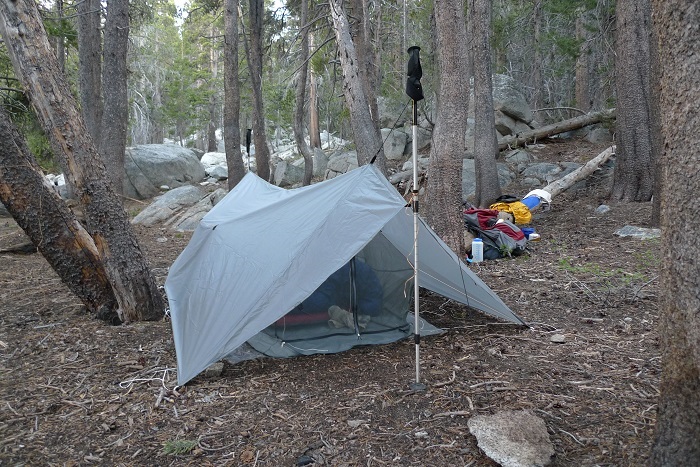
Generally, a footprint is better than a tarp regarding the materials and quality. However, the decision depends on the comfort, purposes, prices, and camping location.
Seasoned campers recommend adopting a footprint for backpacking, while a tarp is flawless for car camping in forests or the woods.
If cut to precise measurements, a footprint and tarp may give good shelter from the moisture while you are camping at night when precipitation is predicted. The footprint and the tarp are watertight, and the flooring protector tailored to the tent's precise dimensions can be effective.
Whenever you camp on difficult ground, it is wise to invest in a solid footprint. Scratches and rips may easily damage flooring, but these prefabricated footprints can prevent that. Meanwhile, using a tarp, in this case, will make the destruction itself as it is not a tarp's primary role.
An affordable footprint customed to your tent model will likely provide more shelter than a tarp. Camping tents with sewn-in groundsheets benefit significantly from a footprint. They need far less cleaning and are less likely to require drying or airing when you arrive home.
A tent with a correctly defined footprint will not go beyond the proportions of the floor, making it an effective water barrier. Nonetheless, it's more pricey and single-purpose only.
On the other hand, if you are short of money, a tarp is good to go. It can meet the demands at the campground pretty well. A tarp is famous for its versatility and lightweight.
To collect rainwater, you must extend the tarps beyond the floor size and use them as "rain catchers." The floor might become soaked if rainwater seeps through the tarp.
Being lightweight does not mean it can please you regarding comfort. You can not expect its security and durability level to equal a footprint. Frankly, it’s not a wise option in areas of insects or nocturnal predators' domination.
Beyond that, before making the purchase, here are some aspects for you to factor in:
- Weight: Set your eyes on the camping gear's weight for comfort. No one wants to get extra burden during getaways.
- Online reviews: Real reviews are valid and worth reading. From there, you can know which one meets your needs.
- Material: This reflects how well the product functions and how durable it is. Some people wish for the thick fabric to hinder the water's seepage.
- Size: You'd better get a tarp or footprint that fits the tent's size. Nothing is greater than the groundsheet covering the tent's flooring tightly.
You might as well purchase a tarp or footprint slightly smaller than your tent (roughly 2 inches less). Thus, water does not accumulate between the tent and the tarp or footprint.
Otherwise, on down-pour days, the larger tent footprint or tarp can gather water and then run into your tent, causing a wet bottom and making you sick.
The Bottom Line
There you have it - the well-rounded comparison of tent footprint vs tarp.
Their efficacy as a watertight barrier has also been shown and tested. It's up to you whether or not you bring a tarp and footprint on a trip.
All in all, a footprint is the finest option for shielding your tent from the elements and protects you well. Meanwhile, a tarp is so versatile and becomes unrivaled in some cases where a footprint can not please you.
Hopefully, our advice helped you make the decision better. Please share the post with others and your final choice with us.


